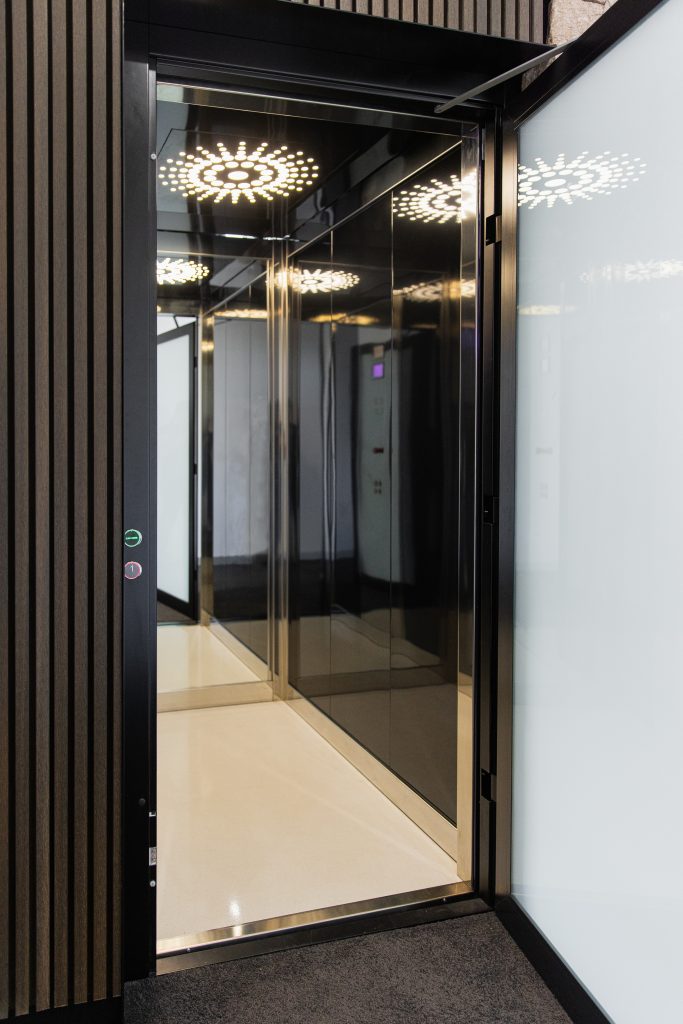London Lift Company: Relied On Experts for All Your Upright Transport Needs
London Lift Company: Relied On Experts for All Your Upright Transport Needs
Blog Article
Diving Into the Globe of Lifts: Common Problems Dealt With by Various Lift Devices
As we browse with the vertical transport systems of modern structures, elevators stand apart as a crucial part of our every day lives. Nevertheless, behind their smooth operation exists a world of detailed mechanisms that can often come across difficulties. From hydraulic elevators to traction systems and machine-room-less styles, each lift kind comes with its collection of typical concerns. Recognizing these difficulties is vital for making sure the smooth performance of these important systems. Let's explore the complexities that underlie the operation of elevators and the prospective issues that can arise, clarifying the elaborate web of lift systems.
Hydraulic Lifts
Hydraulic elevators, often favored for low-rise buildings, use fluid stress to manage the motion of the elevator auto (lift repair companies). This mechanism includes a hydraulic pump pressing oil right into a cyndrical tube, triggering the elevator to move in the wanted instructions. While hydraulic lifts are known for their peaceful and smooth operation, they do include their very own collection of common problems
One common trouble with hydraulic elevators is oil leak. Furthermore, problems with the control system, such as malfunctioning valves or a malfunctioning pump, can create interruptions in the lift's movement.
Regular upkeep and prompt repair services are necessary to make certain the smooth functioning of hydraulic lifts. By addressing these usual issues proactively, building owners can decrease downtime and make sure the safety and performance of their vertical transport system.
Grip Elevators
When thinking about upright transport systems in structures, another typical type in addition to hydraulic elevators is the grip lift. Grip lifts operate using a system of ropes and weights that move the lift automobile by clutching onto the hoist ropes. This mechanism permits for smoother and quicker upright transportation contrasted to hydraulic systems.
Among the typical problems dealt with by grip elevators is rope wear. The constant motion of the ropes within the grip system can lead to tear and use gradually, possibly creating the lift to breakdown or end up being hazardous for use. Routine examinations and upkeep of the ropes are crucial to make certain the lift's correct functioning and safety.
Another problem that grip lifts might run into is connected to the control system. Problems with the control system can lead to issues such as erratic activity, delays in reaction times, or perhaps complete closures. Routine testing and maintenance of the control system are essential to stop such problems and guarantee the elevator's dependability.
Machine-Room-Less (MRL) Elevators

One of the key parts of MRL lifts is the portable gearless traction device that is installed within the hoistway. This maker efficiently drives the lift car without the demand for large equipment discovered in standard traction elevators. Additionally, MRL lifts usually use a weight system to balance the automobile, further boosting their power effectiveness.
In spite of their benefits, MRL elevators might face obstacles connected to repair and maintenance due to the restricted space for equipment installment. Availability for servicing elements within the shaft can be limited, calling for specialized training for professionals. Correct maintenance timetables and regular inspections are vital to ensure the continued smooth procedure of MRL elevators.
Overloading and Weight Limitation Issues
Straining and weight limitation problems are vital concerns in elevator procedures. Elevator makers design raises with certain weight abilities to make sure passenger security and tools long life.
When lifts are overwhelmed, it puts too much strain on the electric motor, wires, and other components, possibly causing malfunctions or Read More Here malfunctions. Security mechanisms such as my website sensors and overload sensing units remain in area to avoid lifts from relocating if they identify excess weight. In addition, going beyond weight limits can bring about enhanced power usage and deterioration on the elevator system.
To minimize overwhelming concerns, constructing supervisors must plainly present weight limits in lifts and enlighten occupants on the value of sticking to these restrictions - lift repair companies. Regular maintenance checks by certified professionals can also assist guarantee that elevators are running within secure weight specifications. By addressing overloading and weight restriction concerns proactively, building owners can enhance lift safety and security and performance
Electric System Failures
Going beyond weight limitations in elevators can not only bring about mechanical issues yet additionally possibly add to electric system failures within the lift infrastructure. Electric system failures are a crucial concern in elevator operation, as they can create unexpected shutdowns, malfunctions, or also safety dangers. One common electric problem is the getting too hot of elements due to extreme existing flow brought on by overwhelming the elevator beyond its capability. This can bring about harm to the electric motor, circuitry, or control systems, causing costly repair work and downtime.
Routine upkeep and inspections are important to identify and address potential electric problems without delay, guaranteeing the risk-free and reliable operation of elevator systems. By sticking to weight limits and performing regular electric system checks, structure proprietors can reduce the danger of electric failures in elevators.
Verdict

Hydraulic lifts, commonly favored for low-rise buildings, utilize fluid stress to regulate the movement of the lift automobile.When taking into consideration upright transport systems in structures, an additional usual kind aside from hydraulic lifts is the grip elevator. Grip lifts run utilizing a system of ropes and counterweights that relocate the elevator vehicle by gripping onto the hoist ropes. Unlike standard elevators that require a separate maker room to house the equipment, MRL elevators incorporate many of the elements within the shaft, removing the demand for a specialized equipment space.In final thought, lifts encounter common concerns such as hydraulic breakdowns, grip system failings, and electrical system problems.
Report this page